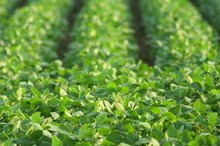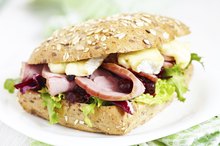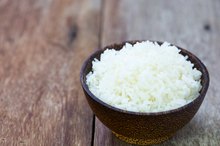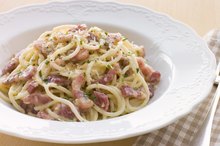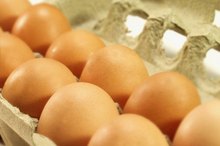What does fact checked mean?
At Healthfully, we strive to deliver objective content that is accurate and up-to-date. Our team periodically reviews articles in order to ensure content quality. The sources cited below consist of evidence from peer-reviewed journals, prominent medical organizations, academic associations, and government data.
- Nutrients: Diet-Induced Dysbiosis of the Intestinal Microbiota and the Effects on Immunity and Disease
- Nutrients: Diet-Induced Dysbiosis of the Intestinal Microbiota and the Effects on Immunity and Disease
- MedlinePlus: Candida Infection
The information contained on this site is for informational purposes only, and should not be used as a substitute for the advice of a professional health care provider. Please check with the appropriate physician regarding health questions and concerns. Although we strive to deliver accurate and up-to-date information, no guarantee to that effect is made.
Candida Diet and Potatoes
Candida, a yeastlike fungus, normally lives in moist areas of your body like your mouth, intestines and vagina without causing harm.However, if allowed to overgrow, candida causes infections like oral thrush, vaginal yeast infections and skin infections.That's where the candida diet comes in2. As a low-sugar plan designed as a complementary approach to treating candida overgrowth, it calls for avoiding foods like potatoes2.Don't change your diet without first talking to your doctor, and don't rely on diet alone as a treatment for candida overgrowth2.
If you are experiencing serious medical symptoms, seek emergency treatment immediately.
The Science
Your body is host to various colonies of bacteria and yeasts. Normally the good bacteria, or probiotics, in your system keep the baddies like candida in check. However, a diet high in sugar upsets the balance of good to bad bacteria in favor of the bad guys, according to a review published in the journal Nutrients in 2012. On the other hand, a diet low in sugar promotes the growth of friendly bacteria, a benefit that helps control overgrowth of pathogens.
- Your body is host to various colonies of bacteria and yeasts.
- On the other hand, a diet low in sugar promotes the growth of friendly bacteria, a benefit that helps control overgrowth of pathogens.
Potatoes Are a No-No
List of Yeast-Free Diet Foods
Learn More
In general, these foods, including potatoes, are a nutritious and a normal part of a healthy diet. However, while following the candida diet, it's necessary to avoid potatoes and other starchy vegetables because they are rich in starches that your body breaks down into sugar2. This dietary change is temporary until your candida overgrowth is under control.
Other Foods to Avoid
The candida diet calls for you to ditch added and simple sugars like table sugar, high-fructose corn syrup and foods made with these sugars2. This means processed snack foods, candies, pastries, sugary beverages and the like are a no-go. You'll also avoid most dairy.
Nonstarchy vegetables include asparagus, broccoli, cabbage, cauliflower and eggplant. Examples of low-fungus nuts and seeds include almonds, walnuts, sunflower seed, hazelnuts and flaxseed.
- The candida diet calls for you to ditch added and simple sugars like table sugar, high-fructose corn syrup and foods made with these sugars 2.
Alternatives to Potatoes
Candida Diet & Soy
Learn More
If you need a substitute for potatoes, try cauliflower.“人造”土豆泥、蒸汽一些花椰菜and puree it in a blender or food processor and add some garlic and herbs.To quench savory cravings for potato chips, have eggplant chips instead -- just slice some eggplant circles, drizzle with a little olive oil and sprinkle with garlic powder and salt before baking. As a substitute for traditional potato fries, use okra or zucchini to make faux fries. Experiment with a batter using allowed ingredients such as plain yogurt.Add crushed almonds to the batter to give it crunch.Once you have a batter just coat the "fries" and bake.
- If you need a substitute for potatoes, try cauliflower.
Related Articles
References
- Nutrients: Diet-Induced Dysbiosis of the Intestinal Microbiota and the Effects on Immunity and Disease
- The Candida Diet: Foods to Avoid
- MedlinePlus: Candida Infection
- Yapar Nur. Epidemiology and risk factors for invasive candidiasis. Ther Clin Risk Mgmt. 2014;10(2014):95-105. doi:10.2147/tcrm.s40160
- Buggio L, Somigliana E, Borghi Vercellini公关obiotics and vaginal microecology: fact or fancy? BMC Womens Health. 2019 Jan;19:25. doi:10.1186/s12905-019-0723-4
- Gunther LSA, Martins HPR, Pimenta de Abreu AL, et al. Prevalence of Candida albicans and non-albicans isolates from vaginal secretions: comparative evaluation of colonization, vaginal candidiasis and recurrent vaginal candidiasis in diabetic and non-diabetic women. Sao Paulo Med. J. 2014;132(2):116-20. doi:10.1590/1516-3180.2014.1322640
- Xie HY, Feng D, Wei DM, Mei L, Chen H, Wang X, Fang F. Probiotics for vulvovaginal candidiasis in non-pregnant women. Cochrane Database Syst Rev. 2017;23;11(11):CD010496. doi:10.1002/14651858.CD010496.pub2
- Niewenhuizen WF, Pieters RHH, Knippels LMJ. Is Candida albicans a trigger in the onset of coeliac disease? Lancet. 2003;361(9375):2152-4. doi:10.1016/S0140-6736(03)13695-1
- Pérez-Torrado R, Querol A. Opportunistic strains of Saccharomyces cerevisiae: A potential risk sold in food products. Frontiers Microbiol. 2016;6:8. doi:10.3389/fmicb.2015.01522
- Wilson D. A tale of two yeasts: Saccharomyces cerevisiae as a therapeutic against candidiasis. Virulence. 2017;8(1):15-7. doi:10.1080/21505594.2016.1230580
- Office of Disease Prevention and Health Promotion. (2015) Appendix 7. Nutritional Goals for Age-Sex Groups Based on Dietary Reference Intakes and Dietary Guidelines Recommendations. 2015-2020 Dietary Guidelines for Americans. Washington, D.C.: U.S. Department of Health and Human Services.
- Kim J, Sudbery P. Candida albicans, a major human fungal pathogen. J Microbiol. 2011;49(2):171-7. doi:10.1007/s12275-011-1064-7
- Martinez RCR, Franceschini SA, Patta MC, et al. Improved treatment of vulvovaginal candidiasis with fluconazole plus probiotic Lactobacillus rhamnosus GR-1 and Lactobacillus reuteri RC-14. Letters Applied Microbiol. 2009;48(3):269-74. doi:10.1111/j.1472-765x.2008.02477.x
Writer Bio
Janet Renee is a clinical dietitian with a special interest in weight management, sports dietetics, medical nutrition therapy and diet trends. She earned her Master of Science in nutrition from the University of Chicago and has contributed to health and wellness magazines, including Prevention, Self, Shape and Cooking Light.

